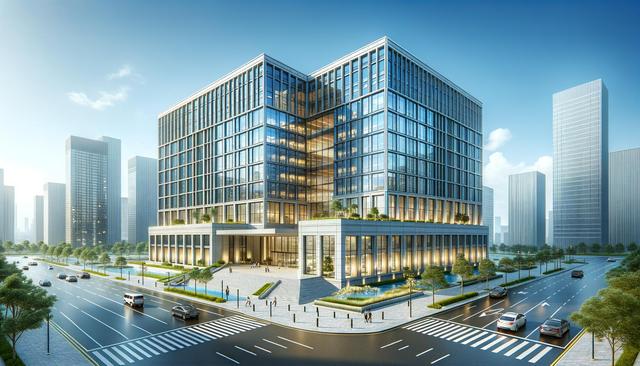
Commercial Real Estate Investments: Opportunities and Risks in 2025
The Current Landscape of Commercial Real Estate
As we approach 2025, commercial real estate continues to demonstrate its resilience and adaptability. The sector has undergone significant transformations, primarily driven by technological advances and shifting market demands. While traditional office spaces face challenges due to the rise in remote work, there is a burgeoning demand for flexible workspaces and co-working environments. Retail spaces, too, are evolving, with a focus on experiential offerings and integrated technology to attract consumers.
Investors are keenly observing these changes, identifying opportunities in areas such as logistics and warehouse spaces, which have seen increased demand due to the explosion of e-commerce. Additionally, data centers have emerged as a lucrative segment, driven by the growing reliance on cloud computing and data storage.
Despite these opportunities, challenges remain. The uncertainty in global economic conditions, coupled with regulatory changes and environmental considerations, adds layers of complexity to investment decisions. Therefore, understanding the nuances of each market segment is crucial for investors looking to make informed decisions in 2025.
Emerging Opportunities in 2025
Commercial real estate in 2025 offers a plethora of emerging opportunities for astute investors. One of the most notable trends is the rise of mixed-use developments, where residential, commercial, and retail spaces coexist, creating vibrant communities that cater to diverse needs. These developments are particularly attractive in urban areas where space is a premium.
Another sector exhibiting growth is healthcare real estate. With an aging population and increased focus on healthcare services, facilities such as medical offices, hospitals, and specialized clinics are experiencing heightened demand. Investors are finding value in properties that offer essential services, ensuring long-term stability and returns.
Furthermore, sustainability and green building initiatives are gaining traction. Properties that adhere to environmental standards not only attract eco-conscious tenants but also benefit from government incentives and reduced operational costs. Investors are increasingly considering ESG (Environmental, Social, and Governance) factors in their portfolios, aligning financial goals with sustainability objectives.
Technological Innovations and Their Impact
Technology plays a pivotal role in shaping the future of commercial real estate. Innovations such as artificial intelligence, the Internet of Things (IoT), and smart building technologies are transforming how properties are managed and operated. These technologies enhance efficiency, reduce costs, and improve tenant experiences.
Blockchain technology is also making waves in commercial real estate transactions. By offering greater transparency and security, blockchain can simplify processes such as property transfers, lease agreements, and contract management. This technology is particularly beneficial in reducing fraud and ensuring compliance with regulatory requirements.
Additionally, virtual and augmented reality tools are being leveraged for property marketing and tenant engagement. These tools enable prospective tenants to explore properties remotely, saving time and resources for both parties involved.
Assessing Risks in the Commercial Real Estate Market
While opportunities abound, potential risks cannot be overlooked in the commercial real estate market of 2025. Economic volatility remains a concern, with factors such as interest rate fluctuations and geopolitical tensions impacting market stability. Investors must stay informed about global economic trends and be prepared to adapt their strategies accordingly.
Regulatory changes also pose significant risks. Local and national governments are increasingly implementing policies aimed at promoting sustainable development and reducing carbon footprints. While these regulations align with global environmental goals, they may require additional investments in property upgrades and compliance measures.
Moreover, the shift in tenant expectations towards flexible and technologically equipped spaces drives the need for continuous property enhancements. Investors need to anticipate these demands and allocate resources effectively to maintain competitiveness in the market.
Conclusion: Navigating the Future of Commercial Real Estate
As we look towards 2025, commercial real estate remains a dynamic and evolving sector. While there are numerous opportunities for growth and innovation, investors must navigate an intricate landscape of risks and uncertainties. By staying informed about market trends, technological advancements, and regulatory changes, investors can make strategic decisions that align with their long-term objectives.
Ultimately, the key to success in commercial real estate investment lies in a balanced approach that embraces innovation while mitigating risks. By doing so, investors can position themselves to capitalize on the evolving opportunities that 2025 has to offer, ensuring sustainable growth and profitability in the years to come.